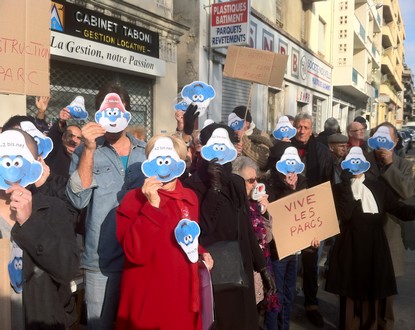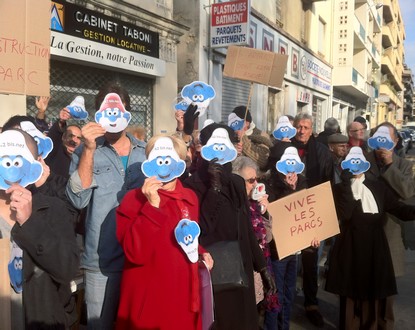Christian Estrosi may be a specialist in the art of dodging, as Patrick Allemand claims, but in this other potential dead end, he demonstrated a Jesuit-like intellectual finesse to gracefully exit a situation that was becoming increasingly slippery and complicated. And, in terms of dodging, this time it was a grand leap à la Nureyev!

And in this case, doubt was beginning to overshadow certainty. Hence the wise decision to defuse a conflict that probably didn’t deserve as much attention. Indeed, logically speaking, demolishing two buildings to reconstruct them across from a garden that needed to be relocated to the site of the demolished buildings made little sense, even defying logic. That, despite the technical reasons that claimed to legitimize this decision.
Because, although these buildings show no sign of luxury, it is equally impossible to define them as “very dilapidated,” as the law would require to justify demolition.
And, above all, if the socio-economic survey that was supposed to be the basis of it was well documented verbally but never actually conducted, as testified by the interested parties supported by a legal advisor representing the collective of owners opposed to this discriminatory measure. First question: why this falsehood?
And this, without considering the complex and costly process of expropriations and relocations that the execution of this plan would have involved at the end of a contentious process that promised to be long and more than complicated.
The young families “fighting” for the defense of their rights would not have easily laid down their arms (organization, mobilization, reaction, humor*) and, let us not forget, they were joined in their “fight” by the Veterans of the wars (real ones, this time) who, in turn, oppose the destruction of the monument to one of their own, Colonel Jeanpierre, who died for France, with the square that was to be sacrificed to make way for a building bearing his name! And with the ‘veterans’ you don’t joke around!
The mayor’s decision entails minor modifications to the project, which remains more than valid in its entirety. But here, we are in a technical framework where adjustments are more easily made, if there is the will.
What is important and noteworthy is the valuation of the method: By engaging in dialogue, considering others’ reasons, educating, modifying one’s ideas if necessary, and not making one’s decisions dogmas, it is demonstrated that things can progress more easily, in an atmosphere of consultation and even collaboration, by rejecting the logic of confrontation which, as Sun-Tzu also said, “spills blood.”
And no matter if the price for this result is touching a few sensitivities.
Christian Estrosi presented the results of the consultation on the development of the Vernier-Thiers-Notre Dame districts (consultation conducted from October 22 to December 21, 2012, at the Notre-Dame Leisure Activity Center).
As a result, while the Notre Dame impulse site generated much support, particularly with the pedestrianization and requalification of Rue de Suisse, the Cour Bensa sector, the relocation of the garden captured all the attention. The consultation revealed the importance of the current Colonel Jeanpierre square to the residents.
Following this consultation, Christian Estrosi proposed to the Prefect to study the possibility of adapting the project as it was predefined, for the Cour Bensa sector alone, preserving the two buildings at 42 and 42 bis rue Trachel. Furthermore, it was proposed to maintain the Colonel Jeanpierre square as is. The rest of the PNRQAD operation would not be modified.
Christian Estrosi added: “I am now awaiting the opinion of the Prefect of the Alpes-Maritimes to know whether the ANRU would agree to our modifications. Otherwise, the whole PNRQAD project would be called into question.”
The Urban Renewal Projects (PRU) led by the Metropolis aim to pursue four main objectives:
1 – Diversify and improve the housing offer,
2 – Open up priority neighborhoods, requalify public spaces, and develop service and equipment offers,
3 – Reinvest in the existing urban fabric to fight against urban sprawl phenomena, as conveyed by our urban planning documents,
4 – Advance the social and economic integration of the inhabitants of these neighborhoods.
A part of this project actually concerns three sectors in the heart of the city: Notre Dame, Thiers, and Vernier.
In a few numbers, this perimeter represents:
17,500 inhabitants;
households mostly composed of one person;
11,192 housing units, of which 88% date from before 1974;
57% of households are non-taxable and 26% live on incomes below the poverty line.
A part of the territory is classified within the Sensitive Urban Zone of Trachel, on either side of Gare Thiers.



